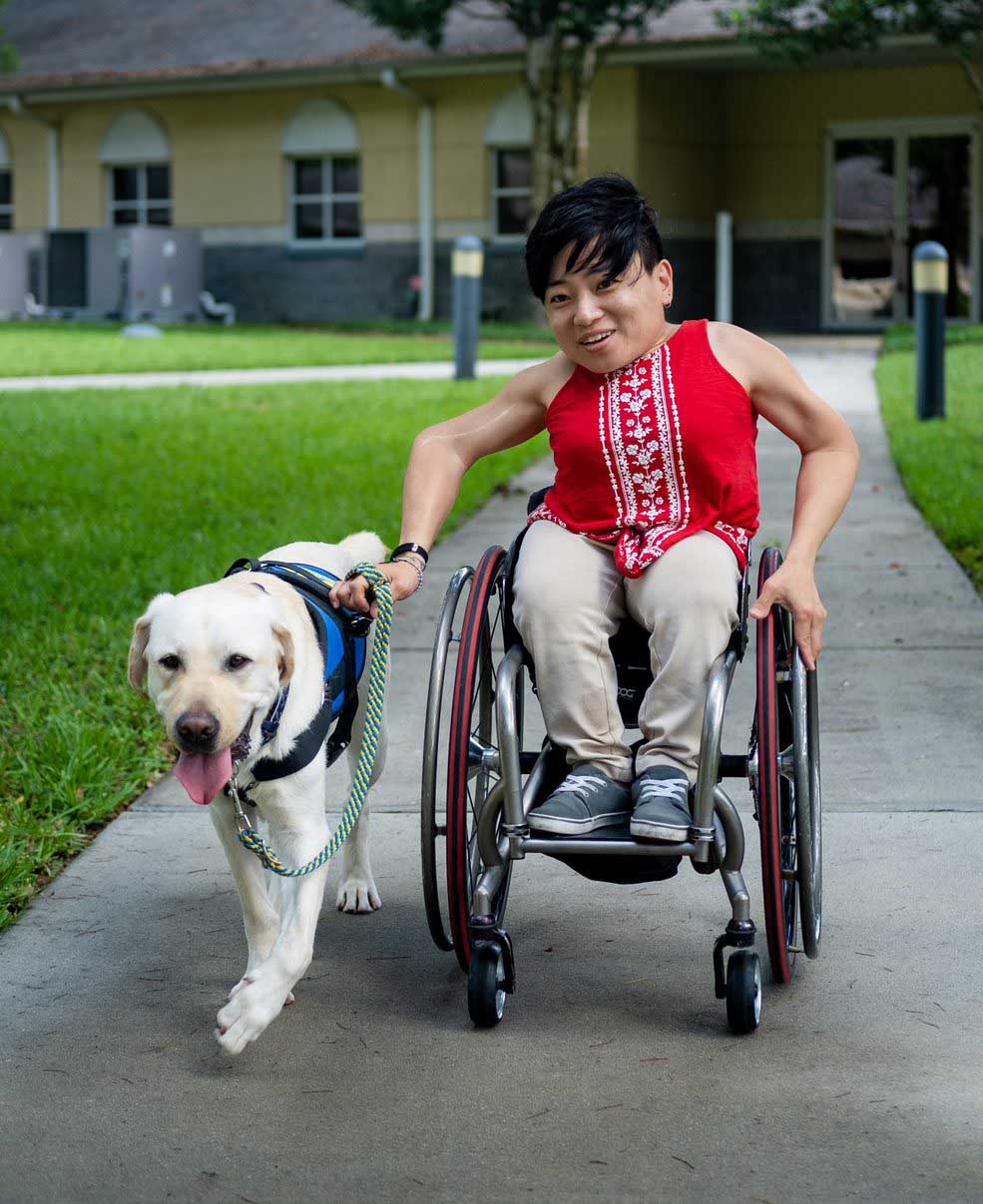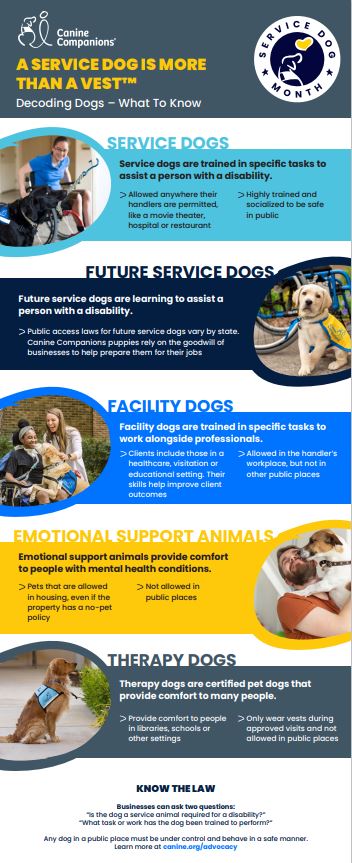Home » Service Dogs » National Service Dog Month » Know the Differences: Service Dogs, Emotional Support Animals and More
Know the Differences: Service Dogs, Emotional Support Animals and More
 It takes a special dog to be an expertly-trained service dog. The Americans with Disabilities Act (ADA) can help you know the difference!
It takes a special dog to be an expertly-trained service dog. The Americans with Disabilities Act (ADA) can help you know the difference!
- A service dog is a dog that has been individually trained to perform work or tasks to assist a person with a disability.
- An animal who provides comfort doesn’t qualify as a service dog under the ADA.
- Only service dogs and their handlers are allowed in public places where pet dogs aren’t allowed.
There are other types of dogs you may have seen that aren’t service dogs:
- Facility dogs are highly trained in specific tasks to assist professionals working in healthcare, rehabilitation, criminal justice or education settings. However, facility dogs aren’t permitted in public except in the facility where they work to improve client outcomes.
- Therapy dogs are pets that have been certified to visit and provide comfort and joy to people who need it. Therapy dogs aren’t allowed in public places, except where they are providing pet therapy.
- Emotional support animals are pets that help people with disabling mental health disorders feel comforted and calm. They’re not trained in tasks and don’t have the right to go into public, unlike a service dog.
Why Does This Matter?
When untrained pets or poorly trained service or emotional support dogs are in public places where they aren’t allowed, it has a real impact on people with disabilities and the trained service dogs they rely on for independence.
of service dog users have encountered poorly trained dogs
0
%
had an uncontrolled dog snap at, bite, bark at or interfere with their service dog
0
%
report that poorly-trained dogs have negatively impacted independence and quality of life
0
%

